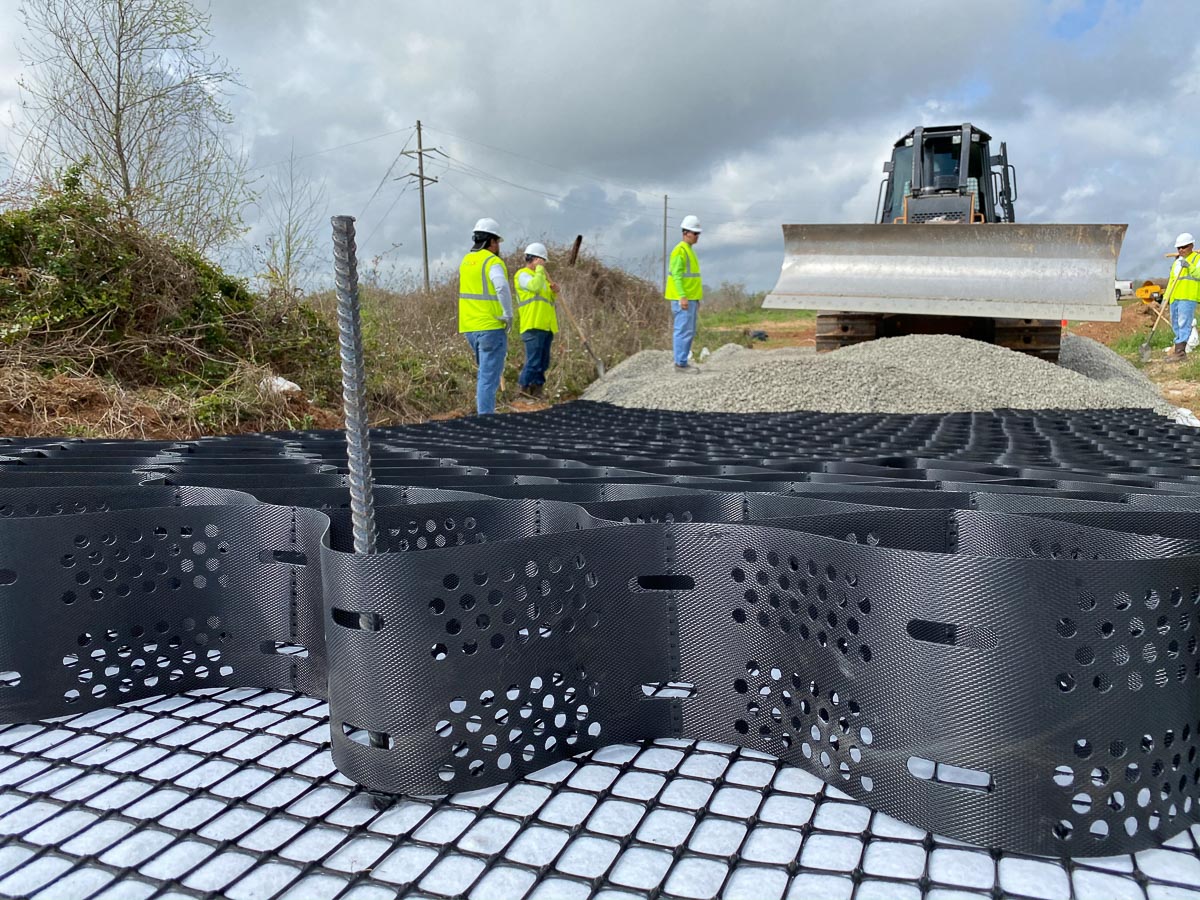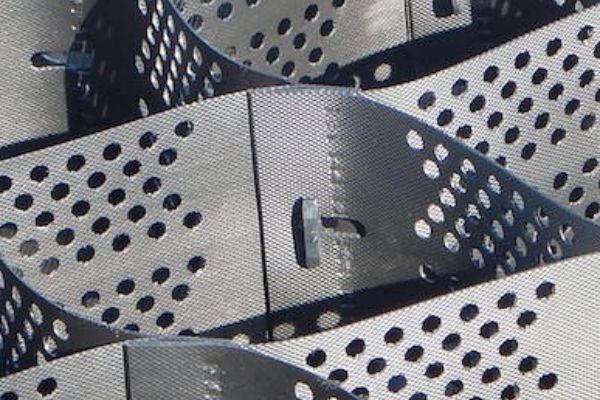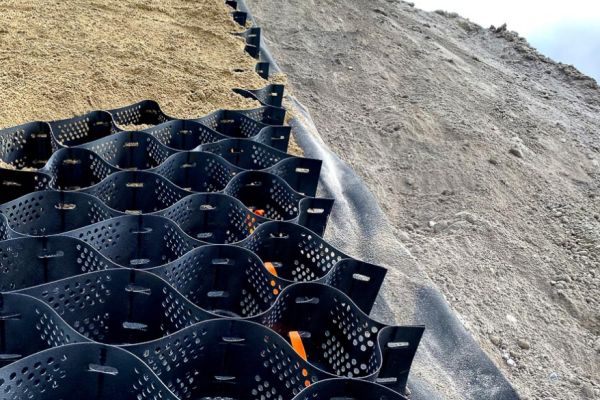
The laying of geocells is generally carried out on slopes or roadbeds. Geocell laying, connection, fixing, and backfilling are important construction steps. |
| Materials Needed To Install Geocells On Slopes |
1. Geocell: This is the main material used to enhance the stability of slopes and reduce soil erosion. Geocells are usually available in panels or rolls. 2. Rooting nails or anchors: used to fix the geocell to prevent it from moving or shifting during backfilling. Used at the edges of geocells. 3. Backfill material: This is the material that fills the spaces in the geocell interior. Used backfill materials include soil, total, or gravel. The materials chosen 4. Hand tamper or compaction equipment: Used to compact the backfill material to ensure it reaches the required density and stability. 5. Knives or scissors: Used to trim and adjust the geocell to the shape and size of the slope. These tools can be used to cut geocell panels or rolls. 6. Measuring equipment (such as a distance meter or measuring tool): If precise measurements of the slope’s dimensions are required to ensure proper 7. Edge protection material (optional): Sometimes, the installer may need to add more edge protection material to prevent damage to the geocell’s 8. Other safety equipment (as needed): Depending on the work environment and safety regulations, appropriate safety equipment such as gloves, |
  |
| How To Install Geocells On Slopes? |
The slope must be laid from top to bottom, from the top to the bottom of the slope. Before laying, the gravel and debris on the slope surface must be cleaned 1. Site preparation: Clear vegetation, debris, and loose soil from the area where the geocell will be installed. Measure to determine the dimensions of the slope 2. Expand or place the geocell: After the geocell is transported to the construction site, workers must stretch the folded cell (some fibrous materials, such as 3. Fix the geocell: Use root nails, anchors, or other suitable methods to fix the geocell on the slope. These should be placed around the perimeter of the geocell 4. Backfilling material: Use the load-bearing machine on the construction site to fill the granular objects until it is full and beyond the top of the geocell, 5. Finishing and Vegetation: Once the required slope stability is achieved, the surface can be finished according to project specifications. This includes adding 6. Inspection and maintenance: After the construction is completed, review it from beginning to end to see if any missing cell grids have not been filled to |
| Benefits Of Installing Geocells On Slopes |
Proper installation of geocells on slopes has many benefits, particularly slope stability, soil erosion control, and ecological protection. 1. Improve slope stability: Geocells can improve slope stability. They increase the soil’s resistance to sliding and reduce the risk of landslides and slope collapse, 2. Soil erosion control: Geocells reduce the possibility of soil erosion and prevent rainfall, water flow, or waves from eroding soil on slopes. This helps protect 3. Ecological protection: Geocells help maintain the ecosystem on slopes. By reducing soil erosion, they protect vegetation and wildlife habitat and contribute 4. Reduced maintenance costs: Geocells reduce soil loss on slopes, reducing maintenance costs on slopes and downstream areas. They extend the life of your 5. Sustainability: Geocell manufacturing often uses recyclable materials and helps reduce resource waste. |















